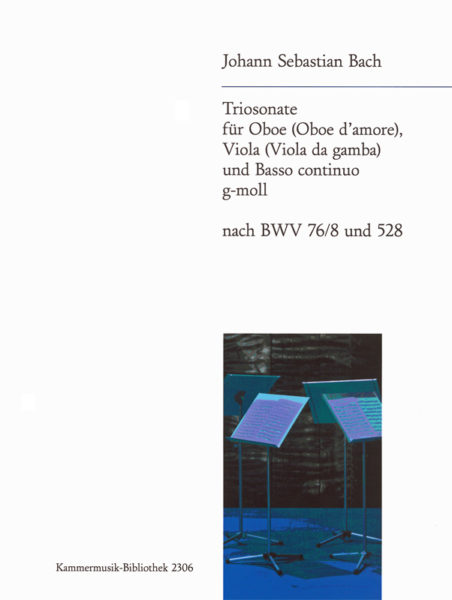Johann Sebastian Bach (1685–1750) Triosonate g-moll
Rekonstruktion nach BWV 76/8 und 528 herausgegeben von Pieter Dirksen [Ob(Ob d'am),Va(Vagb),Bc.]
64 Seiten | 23 x 30,5 cm | 260 g | ISMN: 979-0-004-50342-3 | Broschur, Fadenheftung
Mit der Rekonstruktion einer Triosonate nach BWV 528 wird das eher schmale Kammermusik-Repertoire Bachs aus der mittleren Weimarer Zeit erweitert.
Pieter Dirksen geht auf die nachweisbaren Vorlagen der Orgelsonate e-moll BWV 528 zurück: auf die Sinfonia der Kantate BWV 76, auf das Orgelstück BWV 528/2 sowie auf Präludium und Fuge BWV 541 für Orgel. Seine Rekonstruktion greift jedoch noch einen Schritt weiter: mit Kompetenz, Mut und Spürsinn legt Dirksen die offenbar wirkliche Basis der drei eng miteinander verbundenen Sätze frei und gelangt dabei zu einer Triosonate für Oboe (damore), Viola (da gamba) und Basso continuo, die sich aufgrund der verschiedenen Instrumente und der verschiedenen historischen Stimmungen (Chorton, Kammerton) sowohl in g-moll wie auch in e-moll realisieren lässt.
„Ein lohnender Rekonstruktionsversuch mit gelungenem Ausgang.“ (Sven Dierke, www.orgel-information.de)










 Blättern
Blättern